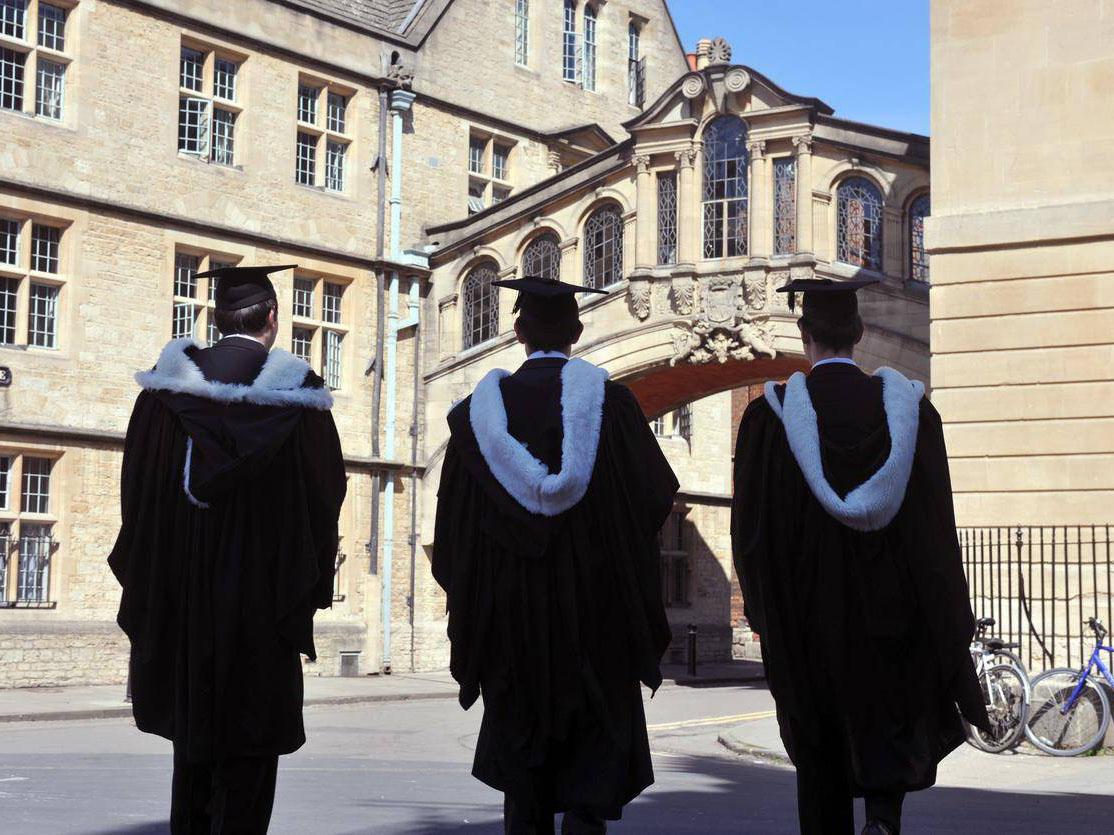More than half of young people now going to university, figures show
Figures also show a gender gap, with women more likely to go to university than men

Your support helps us to tell the story
From reproductive rights to climate change to Big Tech, The Independent is on the ground when the story is developing. Whether it's investigating the financials of Elon Musk's pro-Trump PAC or producing our latest documentary, 'The A Word', which shines a light on the American women fighting for reproductive rights, we know how important it is to parse out the facts from the messaging.
At such a critical moment in US history, we need reporters on the ground. Your donation allows us to keep sending journalists to speak to both sides of the story.
The Independent is trusted by Americans across the entire political spectrum. And unlike many other quality news outlets, we choose not to lock Americans out of our reporting and analysis with paywalls. We believe quality journalism should be available to everyone, paid for by those who can afford it.
Your support makes all the difference.More than 50 per cent of young people are going to university 20 years after Tony Blair’s Labour Party set the target as policy.
Official figures show that in 2017/18, a record 50.2 per cent of English 17- to 30-year-olds had participated in higher education.
But as the figures were published, Gavin Williamson, the education secretary, accused universities of “virtue signalling” and failing to prove what they are doing to recruit disadvantaged students.
A billion pounds of students’ and taxpayers’ money is spent on schemes to widen access to UK universities and colleges each year but many institutions are not showing evidence of the impact it is having, he warned.
The new figures, which cover UK universities and colleges, show a steady rise in the “higher education participation rate” over the last five years.
The rate increased by 0.3 percentage points from 2016/17 to top 50 per cent for the first time in 2017/18.
These figures are an estimate of the likelihood of a young person taking part in higher education by the time they are 30, based on current participation rates.
In a speech in 1999, then prime minister Tony Blair set a target of 50 per cent of young people going into higher education.
The latest figures also show a gender gap, with women more likely to go to university than men.
The participation rate for women is 56.6 per cent while for their male peers it is 44.1 per cent.
Speaking on a visit to King’s College, London on Thursday, the education secretary urged universities to do more to ensure they have a diverse intake of students.
Mr Williamson said: “If I was to announce in the House of Commons today that we were looking at spending £1bn in reaching out to some of the most disadvantaged communities in terms of actually supporting them in terms of coming to university, that would seem an enormous amount of money and what we have at the moment is that money is being spent but ... a lot of universities are not showing the evidence as to the impact it’s having.
“So, there’s a lot of virtue signalling going on, but I’m not seeing enough results going on, and I’m not going to be timid in terms of naming and shaming universities that continuously lag behind, and are not willing to make the changes that are required.”
Mr Williamson indicated that universities should be doing more in terms of taking students’ background into account when making offers.
He used the example of a King’s College medical student who had joined the programme without the grades usually expected and has gone on to come top of the medical school this year.
The minister also praised King’s for its work on recruiting students from a wide range of backgrounds, saying: “From being a very middle-class university, it’s been transformed into one of the most diverse universities anywhere in the country. Diverse in terms of the background of students, social-economic, of course a great international university, but also reaching out into black and ethnic minority communities right across the country.”
Mr Williamson has written to vice-chancellors’ group Universities UK urging the sector to do more to improve access and participation.
He said that a “vast amount of cash” is being spent in this area and that “while the impact is moving in the right direction, I just think it is moving far, far too slowly”.
Professor Julia Buckingham, president of Universities UK and vice-chancellor of Brunel University, London, said: “Universities share the government’s desire to help disadvantaged students access a world-class education and ensure that all students are supported to succeed during their studies.
“Progress is being made, with 18-year-olds from the most disadvantaged areas in England more likely to go to university than ever before. However, we know there is more work to do and universities are redoubling efforts to improve access and support retention.
“Universities have recently set themselves even more ambitious targets to improve equality of opportunity in their new access and participation plans in England. Universities UK has also published recommendations on how universities can address gaps in attainment for black, Asian and minority ethnic students as well as drop-out rates.
“Universities are also calling on the government to prioritise policies to quicken the progress by reintroducing maintenance grants for students most in need, helping reduce drop-out rates and financial barriers to university.”
Press Association
Join our commenting forum
Join thought-provoking conversations, follow other Independent readers and see their replies
Comments